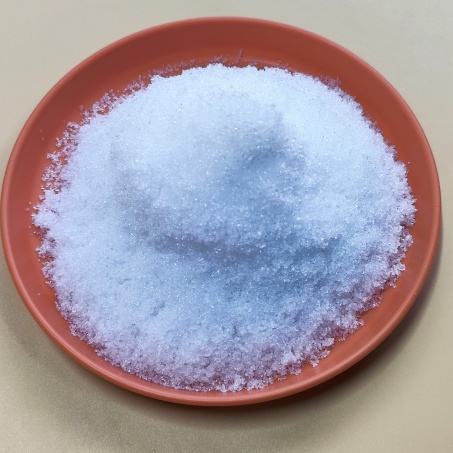Products
Phosphorous acid
- CAS: 13598-36-2
- MF: H3PO3
The phosphorous acid,CAS,13598-36-2, molecular formula: H3PO3. Its reducing and acidity make it irreplaceable in chemical synthesis. The core production process is phosphorus trichloride hydrolysis, which is mainly used in the fields of pesticides, flame retardants and water treatment.
The phosphorous acid produced by our company is hydrolyzed from phosphorus trichloride (PCl₃). The phosphorous acid produced by our company has high purity, less impurities and low odor, which belongs to the superior grade product.
1. Basic information
Name: Phosphorous acid
CAS number: 13598-36-2
Appearance: white crystals
Solubility: soluble in water and alcohol, with strong hygroscopicity.
Molecular formula: H3PO3
Molecular weight: 82
Density: 1.65g/cm3
UN number: 2834
Vigilance code: 81502
Danger category: 8
Second, index parameters
Phosphorous acid≥99.0%
PO4≤0.1%
Cl≤0.005%
SO4≤0.0001%
Fe≤0.001%
3. Production process of phosphorous acid
Process flow :
-Hydrolysis reaction: Phosphorus trichloride is slowly added to water and the temperature is controlled (<50℃) to avoid violent exothermic reaction.
-Dehydrochlorination: the hydrolysis products contain a large amount of HCl, which can be removed by heating or vacuum distillation.
-Crystallization purification: after concentration, the solution is cooled and crystallized, and the crystals of phosphorous acid are separated by centrifugation.
-The process is mature, the yield is high (more than 95%), high purity and no odor.
4. Main uses of phosphorous acid
4.1Chemical synthesis
-Phosphites: production of antioxidants (such as triphenyl phosphate, tri-nonyl phosphate), used for the stabilization of plastics and rubber.
-Pesticide intermediates: synthetic glyphosate (herbicide), dichlorvos (organophosphorus insecticide).
-Flame retardant raw material: aluminum hypophosphite (halogen-free flame retardant) is prepared for engineering plastics (PA, PBT).
4.2. Water treatment
-Corrosion inhibitor: combined with zinc salt to prevent metal pipe corrosion (recirculating cooling water system).
-Oxygen remover: remove dissolved oxygen in boiler water and inhibit oxidation corrosion.
-Electroplating and surface treatment
-Chemical nickel plating: as a reducing agent, replace the traditional sodium hypophosphite (reduce the cost).
4.3. Food and medicine
-Food additives (food grade): acidity regulator (must comply with FCC standards).
-Pharmaceutical intermediates: synthesis of antiviral or antibacterial drugs.
4.5. Other applications
-Rubber industry: components of vulcanization accelerators.
-Dyes and pigments: as pH adjuster or reducing agent.
5. Safety and storage
-Toxicity: low toxicity, but the solution is irritating to skin and eyes.
-Storage: Sealed and moisture-proof, avoid contact with oxidants (such as nitrates).
-Protection: wear gloves and goggles when operating, and ensure ventilation.
-Packaging: plastic woven bag lined with plastic bag or kraft paper lined with plastic bag, net weight 25 kg.
6. Markets and Trends
-Demand growth: the phosphorous acid,13598-36-2 benefiting from the application of halogen-free flame retardants (such as aluminum hypophosphite) in the electronics and automotive industries.
-Environmental alternatives: gradually replace halogenated flame retardants in accordance with RoHS and REACH regulations.
Categories
News
Contact Us
Contact: Hxochemical
Phone: +86-512-36622455 +86 13285168509+86 13330004268(WhatsApp)
Tel: +86-512-36622455
E-mail: sales@hxochem.com support@hxochem.com logistic@hxochem.com
Add: No. 1377, Fuchunjiang Road, Kunshan Development Zone, Jiangsu Province, China




